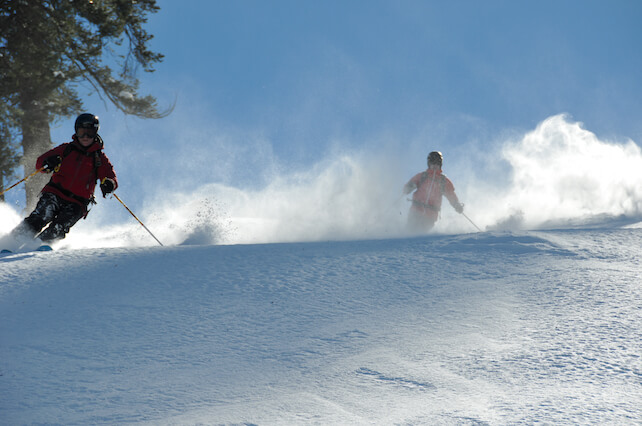
It’s mid-summer in northern India’s Kullu valley in the Himalayan province of Himachal Pradesh – famous for its Hindu temples and Buddhist monasteries, and its majestic hills covered with pine and deodar forest and sprawling apple orchards.
The apricot and plum trees are in bloom and the snow – at least at lower altitudes – is slowly melting off the slopes serving one of the world’s most exhilarating heli-skiing locations: Himachal Heliskiing based at Manali, which in the summer is a well-known backpacking centre.
It’s an extraordinary feeling to leave the teeming streets of Delhi at dawn and by dusk to find yourself nearing what was once known as ‘the end of the habitable world’ – normally only reached during the summer months via one of the highest and most remote mountain roads on earth. Here, high on the Rohtang Pass – the desolate gateway to Lahaul and Spiti, which reaches 3915 metres – the only sound which interrupts the silent reign of the great banks of snow beneath massive peaks is the reverberating clatter of your helicopter. Soon you’ll be wallowing in powder on some of the finest skiing terrain on earth, at altitudes occasionally as high as 5000 metres.
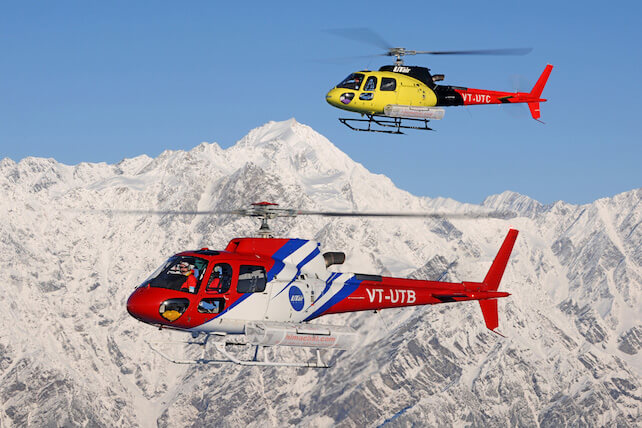
I had arrived in the bustling town of Manali by helicopter which had brought me from Chandigarh, the Punjabi capital, to the heli-pad outside Himachal Helicopter Skiing’s HQ at the ManuAllaya Resortspa in the nearby village of Vashisht, about a 15-minute walk from the heli base – five minutes by car. Another recommended place to stay is the Rock Manali Boutique Hotel & Spa.
Last winter, Himachal Helicopter Skiing operated for five weeks (from February 24 to March 31). Says the director of operations and MD Manjeev Singh Bhalla: “Regular snowfalls kept the runs topped up and there were more than enough safe fresh lines to keep even the most dedicated powder hounds happy.”
Roddy Mackenzie, the Australian climber who started the whole operation almost 30 years ago, says: “Even in days of global warming we seem to have a powder factory here. It is not always perfect three feet of new, but there is almost always some good skiing”.
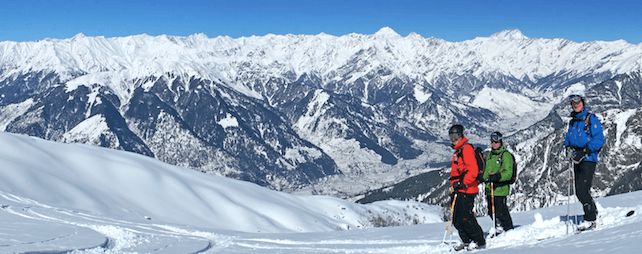
These days, the Airbus H 125 helicopters (previously known as Eurocopter AS 350 B3 squirrels) are flown by two Swiss pilots, Daniel Lerjen and Peter Zurniwen. Andreas Lehmann, a helicopter engineer, also from Switzerland, looked after both the helicopters for most of last winter.
“He was ably partnered by the well-qualified and much experienced team of engineers and technicians from the Indian helicopter owners” says Manjeev. “The local helipad crew, as always, was on hand for all the early starts and the long days to keep things running smoothly behind the scenes.”
The core guiding team, including guides from New Zealand, Tasmania, Switzerland and Canada, rotate as the week progresses. During my last visit, our group – two Swiss, a German and me – started with Chunni Thakur, national champion skier in 1996, and the first Indian to become a heli-skiing guide and – eventually – a shareholder and director. He honed his skills in the ‘Snow Wonderland’ of Solang, a small ski hill nearby with just one lift. “I’ll take you into the hills and give it a go” he announced.
What followed was a veritable ski odyssey. Some of the great peaks of Himachal Pradesh lined up to be marvelled at: Papsura (6451m) – the ‘Peak of Evil’ and White Sail (6446m) are the highest – but not so much higher than Mukar Beh, Indrasan, Deo Tibba and Shiukar Beh, all more than 6000m high. We floated down, as effortlessly as we could at around 4570m, marvelling at both the skiing and the scenery.
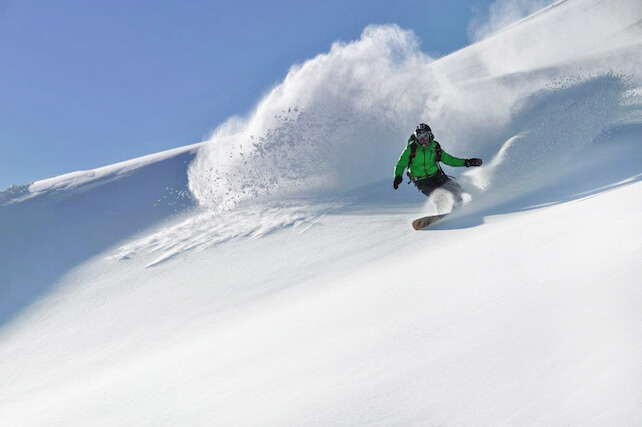
The following day we found ourselves in the Pakhnoj and Jobri areas with Olivier Houillot, a French guide. “No hurry” he said, as we approached a run called, rather ominously, Destiny. “You’re on holiday.” The next run seemed to have my name – or at least my tracks – carved indelibly though invisibly upon its steep, deep blanket of powder. It was a wide couloir between two rock faces: Dead Horse Chute.
“OK Arnie – go for it” said Olivier, allowing me down first. This was generous. Normally heli-ski guides insist you never ski past them, and certainly not in front of them. I didn’t need to be told twice. I attacked the couloir like a hungry man who has just spotted his favourite dish. No stopping – just turn after turn after turn. No question – it was the run of the winter.
At the end of our extraordinary week, we’d comfortably skied the normal minimum vertical target of 100,000 feet (just over 30,475 metres). The most extraordinary week’s skiing of my life was over.
Gulmarg
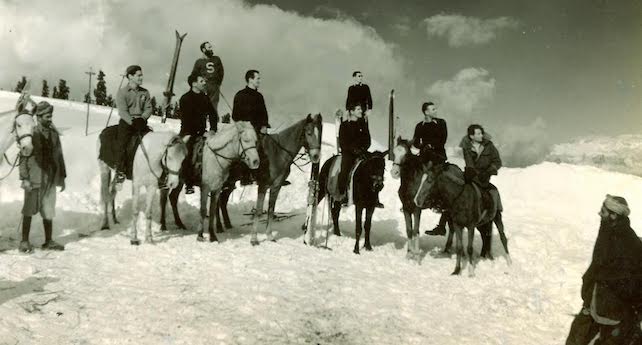
When I first came to Kashmir in 1988, all I could see was the serene beauty of the lakes and houseboats at Srinagar, the summer capital, and the awe-inspiring mountains towering above Gulmarg, the hill station where the British army came to escape the heat and dust of Delhi and also introduced skiing. There was talk of erecting a gondola (an ambitious concept for the Himalayas), but nothing more.
It was in Gulmarg, the only conventional ski resort in the Himalayas, that the British started The Ski Club of India. Just before World War II, some 500 skiers took part in Christmas and Easter races. For most of its skiing history, Gulmarg had relied on two drag-lifts, which served not-unimpressive beginner and lower-intermediate slopes on the golf course, plus an antiquated double-chair for more advanced skiers.
Those who wished for more extensive slopes were obliged to trek up the lower slopes of Mount Apharwat with a guide and porter-cum-‘sherpa’ to carry their skis on a toboggan – something I myself had done during my first visit, waking at the crack of dawn to struggle as high above the tree-line as my stamina would permit, before slithering down again on a pair of old La Croix skis with no edges, which made turning almost impossible.
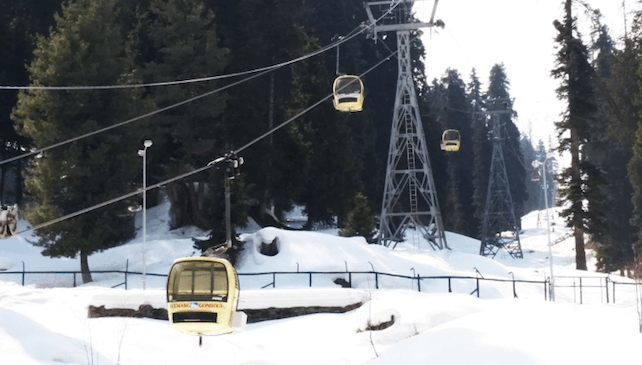
As well as having skis that should have been in a dumpster, my boots were lashed together with fuse-wire. Back then, this was the best equipment the local ski shop could provide. Today, Gulmarg’s rental shops even offer specialised powder and backcountry skis and avalanche safety equipment.
The first gondola – inevitably second-hand, from Courchevel – was a game-changer. Despite the challenge of installing it in such rugged conditions, the pylons for the lower section were completed and the cable rigged 10 years before the cabins were actually finally added in time for the winter of 1997-98.
Things have inevitably moved on, especially now that since 2005, the exhilarating upper section of the gondola has been up and running, taking skiers to very nearly 4000m: the highest ski gondola in the world.
With skiing opening up on such temptingly high, exhilaratingly long and but exposed slopes, the resort has employed safety experts from New Zealand, and a number of experienced high-mountain guides from Europe and North America have brought their skills here too, to help train and advise local guides and ski patrollers. Today, the Gulmarg Ski Patrol is internationally trained and certified by the American Avalanche Association.
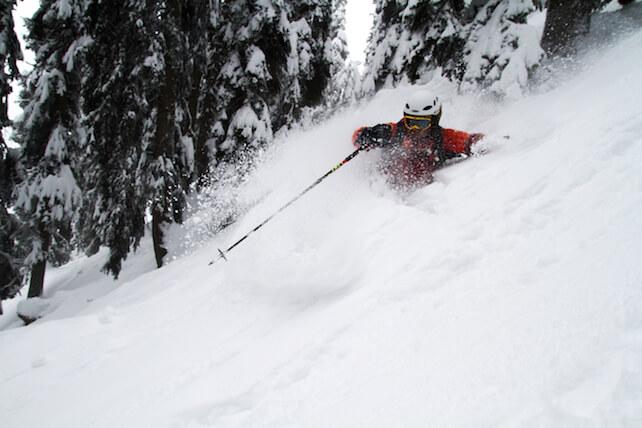
The main gondola is 4.8km long, and cost 110 million rupees to build. (£1.41 million). The lower section of the gondola services fairly gentle tree-skiing, with just one roller-coaster of a cat-track favoured by less-experienced skiers. The all-important top section, which delivers you to the upper reaches of Apharwat (just 175m from the peak at 3950m), serves a seemingly endless range of fairly steep gullies, ravines and ridges, with a constantly challenging and varied pitch.
Although everything up here is off-piste, a wide expanse of terrain beneath the gondola is avalanche-controlled, leaving the flanks on both sides and beyond as uncontrolled backcountry. The upper section is subject to the vicissitudes of weather (strong winds and/or blizzards), as well as the whims of the Indian army, which plays a major role in running (and closing) the gondola. Recently, the lift received another facelift, completed by the winter of 2017, which included new red Poma gondolas.
The scenery is spectacular, Nanga Parbat, the ninth highest peak in the world at 8126m, looms in the distance, along with the nearby peaks of Haramukh (5142m) and Nun Kun (7135m). On a clear day you could see K2 if the Karakoram peak of Masherbrum (at 7821m) wasn’t in the way! Masherbrum (also known as K1) is in disputed territory: Pakistan claims it, but according to the Indian government, it is the 11th highest peak in India.
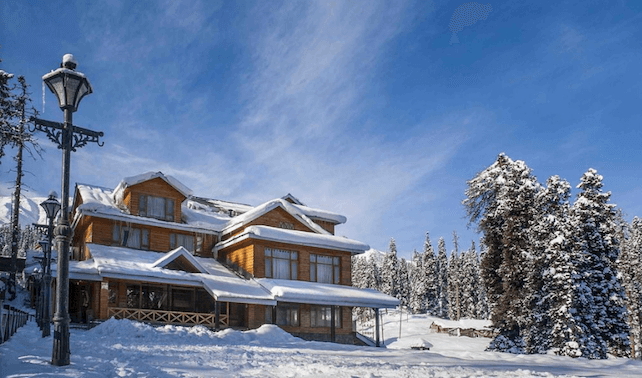
Gulmarg has dozens of hotels, guest houses and cabins. Traditionally, visitors enjoy the old-world colonial charm of the Highlands Park (five-star by local standards) where your bukhari (a stove that serves as a fireplace) is lit every morning by a house-boy. This is where I stayed during my first visit. Next time it was at the new Heevan Retreat, a local three-star hotel.
There is now a new international five-star hotel, the Kyhber Himalayan Resort and Spa, nestled in the woods facing Sunshine Peak (a nearby destination for ski-touring). The hotel has a gym, pool, and spa, along with an excellent restaurant.
Sadly, the Foreign and Commonwealth Office currently advises against all travel to Kashmir because of the ongoing conflict between India and Pakistan, which makes travel insurance difficult. But that doesn’t stop a good number of Europeans, including British skiers and snowboarders, from enjoying a unique Himalayan ski experience. Kline Adventures offer Gulmarg ski packages.










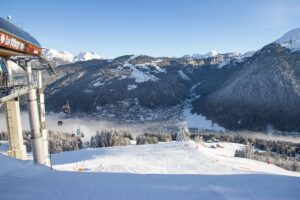
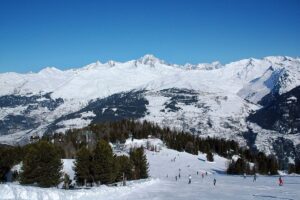
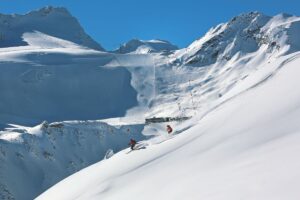
Add Comment